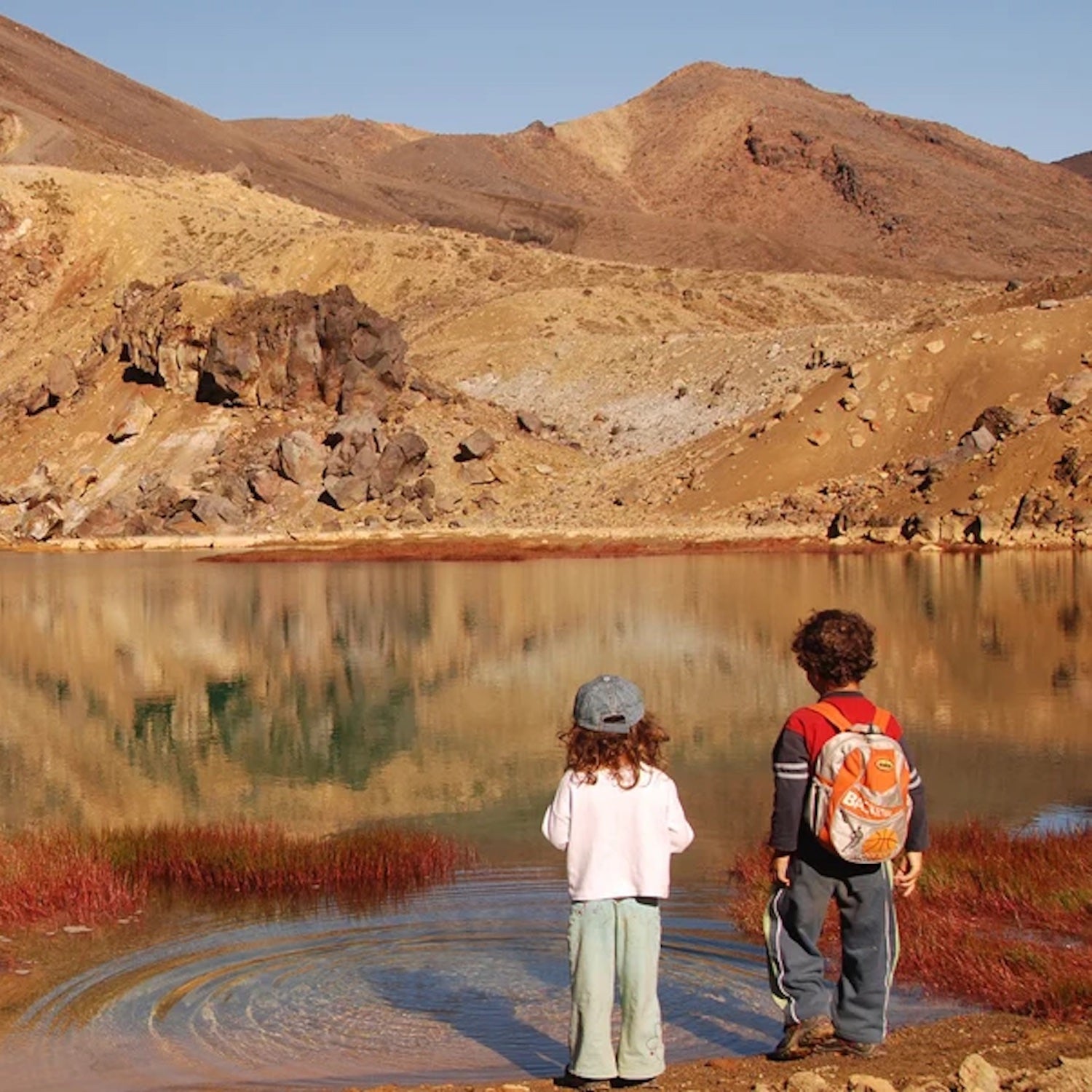While out on a hike, it’s common for kids to say, “it’s too far” about the trail, or, “it’s too heavy” about their backpack. But knowing how far kids can actually hike, and how much they can actually carry helps parents plan better routes and know the difference between instilling a sense of accomplishment and taking the fun out of hiking.
I talked to two experts on the topic. Tod Schimelpfenig is the former (now retired) curriculum director for , and raised four kids in rugged Wyoming, taking them each backpacking as early as age three.
Dr. Stephanie Canale advises kids and parents daily in her family medicine practice in Santa Monica, California, and hikes regularly with her eight-year-old son.
Here’s what Schimelpfenig and Canale have to say about much weight kids should and shouldn’t carry, and how far they’re capable of hiking, broken down in three age groups.
How Far Can Kids Hike?
“I think the average, school-age child could easily go five miles, as long as you’re going at their pace,” says Dr. Canale. “The key is to stay well-hydrated, have snacks, take breaks.”
She adds, “Within reason, I don’t think we should be putting limits on them.”
Still, here are some guidelines:
Ages 0-3
Canale recommends that parents carry kids, at least for most of the hike, when they’re toddlers.
For this young age group, we recommend sticking to outings less than two miles. Just getting out and going any distance with kids three and under should be considered a “win.”
Distance: .25 to 2 miles
Ages 4-7
Schimelpfenig says that kids are capable beings, explaining that he backpacked up to six miles a day with his six-year-old. But, he adds, he’d opt for shorter trips over longer, and has always paid close attention to whether his kids were enjoying themselves or not. “Kids get curious, want to stop and look at things, socially interact and play,” he says. “I’m very cautious about saying, ‘OK we’re hiking to XYZ,’ and instead have a kid-led hiking agenda.”
Distance:
Age 8+
Every kid is different, but older, school-age kids around eight years old and up can manage higher mileage. Of course, the distance will decrease the heavier load they’re carrying, but older children and certainly teenagers can hike a decent amount of miles.
Of course, that doesn’t mean forcing your nine-year-old to hike at least six miles every outing is a good idea. Having a positive experience trumps distance, but know that they’re physically capable.
Distance: 6 to 10 miles
How Much Weight Can Kids Carry?
“In the medical literature, you’ll find it says kids can carry 15 to 20 percent of their body weight,” says Schimelpfenig. “But I would err toward 15 percent, and that’s in a pack that fits them properly, not in some adult thing that doesn’t carry the weight well.”
Canale suggests that lighter is better for younger kids. “I’d say five to ten percent body weight for kids under seven or eight,” she says.
Age 0-3
Maybe it’s an empty backpack, or a backpack with a stuffy or a jacket in it. Or maybe they carry a small water bottle or snack.
Weight: 0 pounds to 5 percent their bodyweight
Age 4-7
Canale, who recommends five to ten percent bodyweight for this age group, notes that weighs 42 pounds, which means they’d carry a pack that weighs either just over two pounds, or just over four pounds.
Most backpacks will weigh around two pounds, so having a child carry an empty pack with small snacks in it, or with a light fleece layer, may be all they can handle. Larger kids in this age bracket will be able to carry heavier items, like small amounts of water.
“Carrying water is a good way to teach kids to stay hydrated while exercising, even on short hikes,” says Canale. Consider having your child carry a little water at a time, and refilling their bottle or bladder with your own stash of water during hiking breaks.
Weight: 5 percent to 15 percent of their bodyweight
Age 8+
“The older/larger/more experienced a child is the more they can carry,” says Schimelpfenig. Under his guidelines, children of this age of their body weight. If your child is 80 pounds, then that child could carry pack-weight—the weight of a backpack plus its contents—of 12 pounds.
Weight: Roughly 15 percent of their bodyweight
Give Kids What You Have
“Kids like having some of what their parents have in their packs,” advises Shimelpfenig, “an extra layer, a little bit of food, a rain jacket.” Load your packs together so kids see what you’re carrying, and can take pride in loading similar contents. “Hopefully,” he adds, “they start thinking about what they need when they go outdoors. It’s never too early to get them thinking about that.” He adds that for backpacking trips, he’d carry the sleeping bags, tent, and heavier items.
Make Sure It Fits
Both Schimelpfenig and Canale emphasize the importance of well-fitting backpacks. Canale says to make sure the sternum strap attaches across their sternum and not their breast bone for heavier loads.
Shimelpfenig implores that the hipbelt should sit directly on the hips, not at the waist. “And the shoulder straps should stretch out from the pack at a 90-degree angle to the child’s shoulders, not from below or above.”
Both advise that the pack should be snugged up to the back so it can hold the load close to the body and low around the hips.
And while kids are capable, adaptable beings, Schimelpfenig says to remember that they’re not miniature adults. “It’s like the difference between a mouse and a cow,” he says, explaining that kids don’t regulate their body temperatures as efficiently as adults, and aren’t as capable of expressing themselves clearly when they have, say, a headache that could be caused by the altitude.
So while it’s important to stay in tune with your child’s wellbeing on the trail, it’s also important to know that they really are able to carry a backpack (just one that’s not too heavy), and that they ��������hike a mile…or five.


